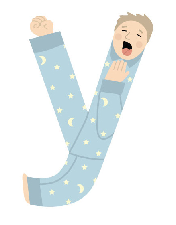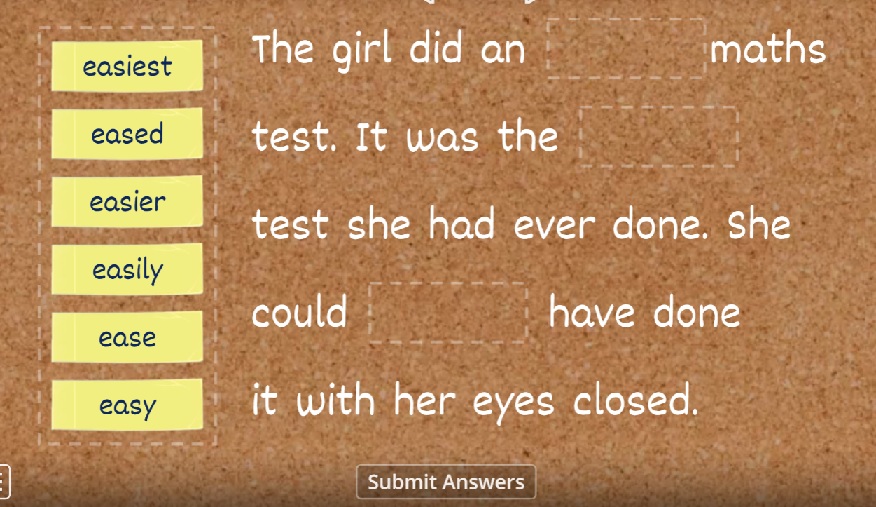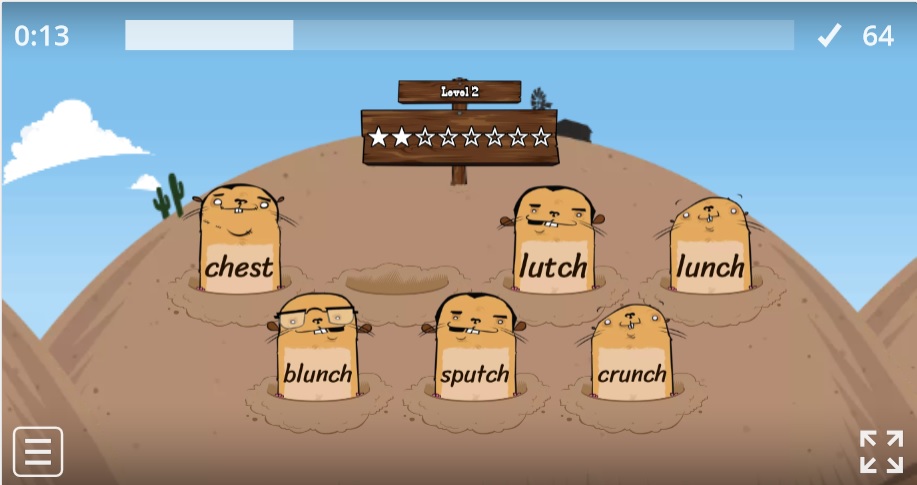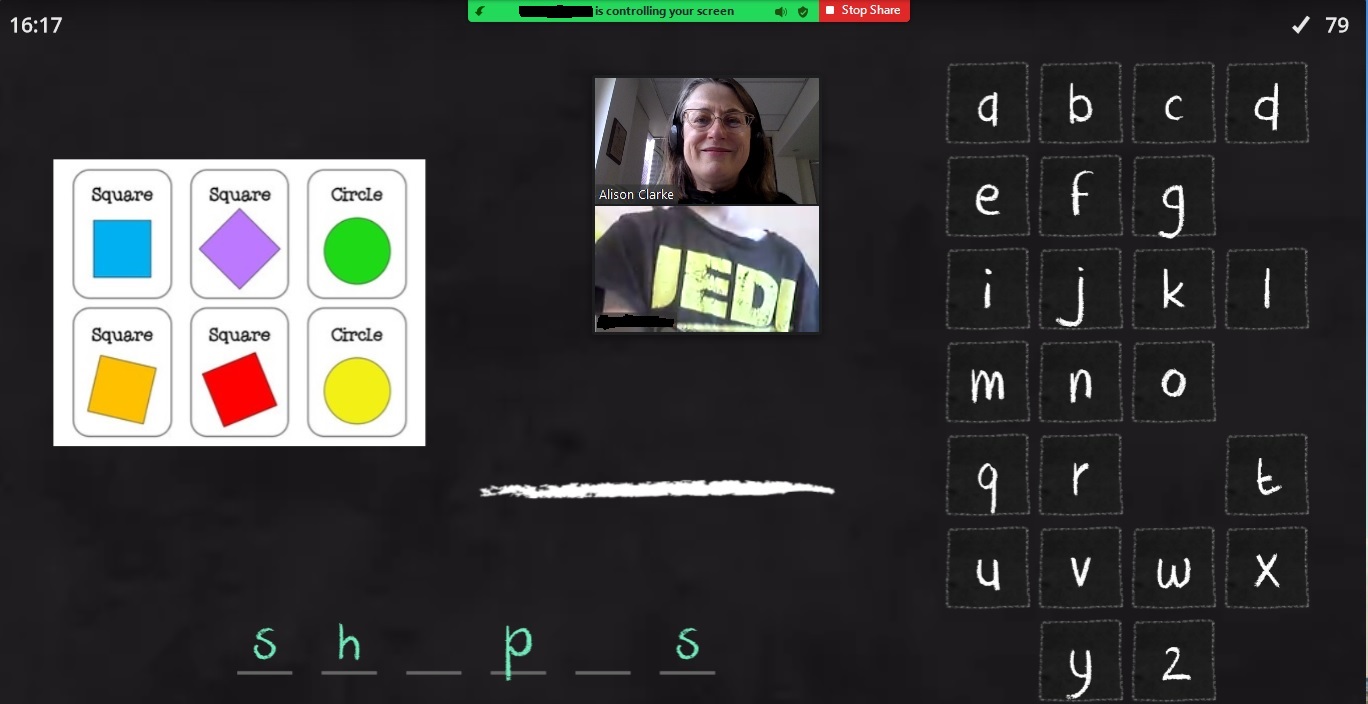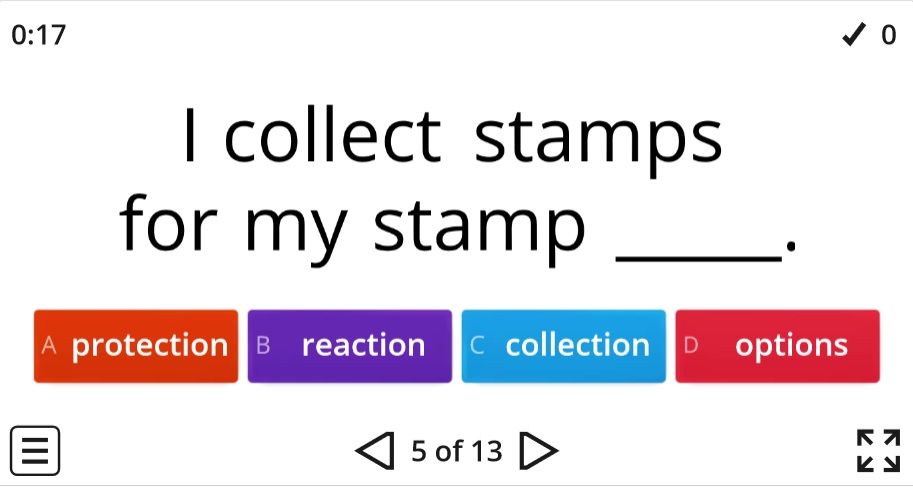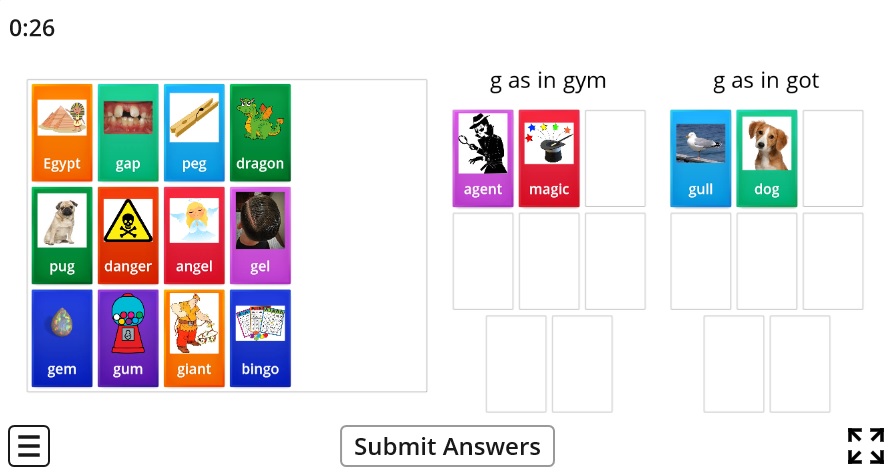Ten cheers for our new Children’s Laureate!
0 Replies
I was so excited to be invited to the launch of Sally Rippin’s two year program as Australian Children’s Laureate on Tuesday, though surprised to spot a former colleague in the crowd who was once staunchly anti-phonics and pro Reading Recovery/Fountas and Pinnell.
Then I realised: Sally is the Perzackly Perfect Person to cheer people off the sinking Balanced Literacy ship (especially since the Grattan Institute’s Reading Guarantee report), and onto ship Structured Literacy, so all kids can hurry up and start enjoying wonderful stories.
Sally isn’t just an author of great kids’ books, she’s the mum of a neurodivergent kid who struggled to read and spell, and a staunch advocate of making sure all kids are taught to crack our spelling code, instead of being encouraged to memorise and guess words. Her book for adults about this, Wild Things: how we learn to read, and what can happen if we don’t, should be in every school and local library. Here she is at the launch with queen of our activist dyslexia mums, Dyslexia Victoria Support founder Heidi Gregory.

Sally’s term as Children’s Laureate is the perfect time for a strong push to dump dross like predictable/repetitive texts and rote-memorisation of high frequency word lists, and promote things like decodable texts and systematic, explicit phonics teaching in Years F-2. It’s also the perfect time to improve early identification and intervention for neurodivergent kids in schools, and knock down barriers to reading for all kids.
The Grattan Institute report (there’s a podcast about it here, and a 20-minute YouTube summary here) says kids with poor literacy currently in school could cost taxpayers $40 billion over their lifetimes, not to mention the personal cost to those kids. I cannot think of a better use of my taxes than ensuring all schools use literacy-teaching methods that are based on the best available evidence, and that struggling and neurodiverse kids whose parents can’t afford high-quality private intervention don’t miss out on it.
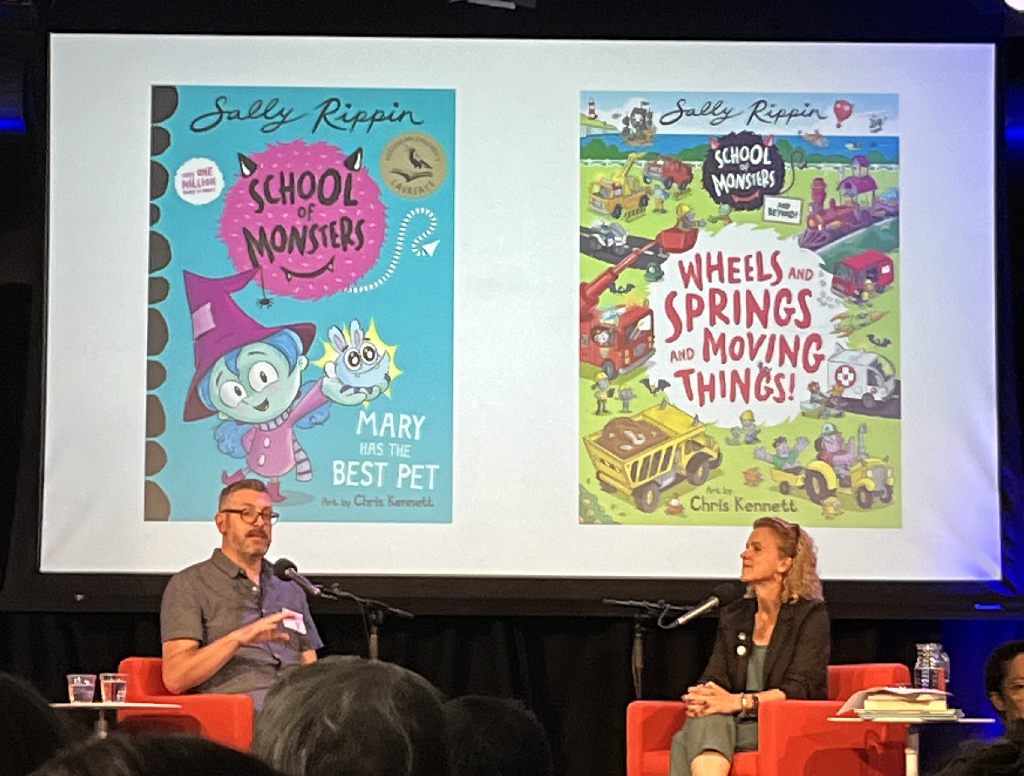
At the launch I also got a copy of Come Over To My House, a picture book co-authored by Eliza Hull, full of stories about making the world more accessible for everyone. It’s perfect for our waiting room. I also got some School Of Monsters compilations for our lending library, signed by Sally and illustrator Chris Kennett (who also drew little bats on them). Chris taught everyone at the launch how to draw a monster, which was rather hilarious.
Sally will be travelling all over Australia in the next two years, so make sure you find out when she is coming to a town or city near you (the ACLF newsletter and social media information is here), and spread the word. It’s a story well worth telling.
Summer holiday groups at Spelfabet
0 Replies
Bookings are now open for our intensive explicit, systematic synthetic phonics therapy groups in the week of 15-19 January 2024.
These are for young children (in school Years F-2 in 2023) who need extra help with learning to read and spell words by sounding them out.
Each group will run for an hour a day, and include plenty of games and fun. We will provide daily homework to complete and bring to the next session.
The groups will be:
| Time | Skill level | Example words targeted |
| 8.45am to 9.45am | Beginners: VC and CVC words. | at, in, hop, bus, red, fan, big |
| 10.15am-11.15am | Adding common suffixes to base words, doubling final consonants as needed. Introducing three “long” vowels with consonant-e/split/silent final e spellings, and when to drop final e before adding a suffix. NB if you have a Year 3-4 child who needs this level of work, we may run a second group for them at 11.45am. | bat-batting, swim-swimmer, hop-hopped, run-runny, shade-shady, time, timer, hope, hoping |
| 11.45am to 12.45pm | Adjacent consonants: CVCC, CCVC, CCVCC, CCCVC, CVCCC. | help, list, trap, stop, crust, strip, jumps |
| 2.00pm to 3.00pm | Consonant digraphs. | wish, chat, fetch, this, when, quick, sing |
We will provide all the necessary resources, including specialist take-home readers. We have a maximum of four children per speech pathologist in our groups, to keep the pace/intensity high. We match children carefully and ask that everyone comes prepared to attend all sessions and do all the homework.
Our groups will be held at our North Fitzroy office in Melbourne’s inner north, with attendance by appointment only. Spaces are limited, and upfront payment for all group sessions is required to secure a child’s place. The cost of a week’s program is $720, which covers all sessions, materials and planning time, plus a brief final report with recommendations. Missed sessions are non-refundable. Private health rebates may apply, depending on your level/type of cover, but Medicare only provides rebates for individual therapy sessions.
Children not already known to us need to attend an assessment session with us before joining a group. This allows us to check whether we have a suitable group, and helps us cater for any special needs/interests. If we don’t have a group matching a child’s skills and needs, we can usually suggest other intervention options.
Please contact Tiana Knights on admin@spelfabet.com.au, (03) 8528 0138 or text 0434 902 249 if you’d like to find out more about these groups, or book an assessment for a struggling reader/speller.
Embedded Picture Mnemonic picture files
0 RepliesSince devising the Spelfabet Embedded Picture Mnemonics, illustrator Cat Macinnes and I have received many requests for products containing them: bookmarks, placemats, friezes, flip charts, cards and posters of different sizes, slideshows, you name it. They’ll even make an appearance on The US Reading League’s Reading Buddies TV show at some stage. The Science of Reading community is a creative one.
Sadly, we don’t have capacity to print, store and mail out lots of hard copy resources containing our mnemonics. If you know of an interested publisher, we’d love to hear from them! Even designing and producing all the downloadable resources people have suggested would be a full-time job for quite a while. We aren’t designers, and already have full-time jobs.
We’re therefore making high-resolution versions of the picture files (.png files, for both PC and Apple) available for people to download and use in creating resources for their own students/caseloads/children. This should make it easy to organise them into any phonics teaching sequence, and print customised materials for any group of beginning readers. Click here to download a zipped folder of the whole set.
Over time, we’ve created alternate versions of some mnemonics, thanks to feedback from purchasers, and in an effort to cater to a surprisingly large audience. Our original ‘e/egg’, ‘o/orange’ and ‘u/undies’ mnemonics were OK for Australian English, but ‘e/echo’, ‘o/octopus and ‘u/up’ were needed for speakers of US English. Recently we’ve discovered that some people aren’t keen on ‘y/yoga’, so we’ve added this nice y/yawn mnemonic to the set.
The zipped folder of picture files includes all the mnemonics we’ve produced to date (except the ‘th/path’ and ‘th/weather’ ones, which weren’t a hit), so when there’s a choice, please use the one that suits you best. In parts of rural Australia where doors aren’t often locked, k/kangaroo is probably a better choice than ‘k/key’. On a surf-mad coast ‘ur/surf’ might make more sense than ‘ur/burn’. In the US, ‘air/hair’ and ‘ear/gears’ aren’t needed, but ‘aw/claw’ is, and ‘wh/whale’ might be (in places where ‘witch’ and ‘which’ aren’t homophones).
When you introduce ‘long’ vowels, you might like to make little strips for student desks like this…
…or a strip like this might suit your students/teaching sequence better:
Hooray, everyone will be able to tailor the set to their accent/sequence/needs, including people who speak Englishes other than Australian, British and American. Cat already put time and talent into drawing all the mnemonics, so you might as well use whichever suit you best (yes, we prefer ‘u/undies’, and people keep asking us to bring it back, ha ha).
Artists should be paid properly for their work, so please respect Cat’s copyright and abide by the terms of use included in the pack. Pricing is based on the assumption that each teacher/therapist/parent who buys the files will use them as they see fit with their class/caseload/family members, and not share them with other professionals or use them for commercial purposes. It’s OK for parents to share printouts with little cousins or the kid next door, but if a school with five Early Years teachers wants to use them in a range of resources across five Early Years classrooms, the school should buy five copies.
The picture files are in .png format, which is the best format for storing high-resolution artwork. They are in a zipped folder which looks like this in the Downloads area of the Spelfabet shop:
Download it to your computer, and you’ll be able to unzip it and access the files, and save them somewhere easy to find and use. Don’t panic if you double-click on a file and it opens in your default picture program and looks a bit weird. The pictures should look as you expect when you drop them into documents. Please reduce picture file size first if they’re too big for your purposes, so the resources you make from them don’t take up lots of space on your computer or take ages to print out. Like adding salt when cooking, it’s easy to make files smaller and lower-resolution, but not reverse the process.
As reading researchers might have predicted, lots of people have told us they’ve been surprised how quickly children have learnt sound-letter relationships using the Spelfabet Embedded Picture Mnemonics. We hope that’s true of any young beginners you try them with, and that you find them quick and easy to turn into great, affordable resources that suit your accent, location and teaching sequence.
Should we do phoneme awareness activities without letters?
19 Replies
If you subscribe to Developmental Disorders of Language and Literacy (DDOLL) emails, you’ll know there’s been a recent storm of professional discussion about whether it’s a waste of time doing phonemic awareness activities without letters.
The strong consensus is that it’s preferable to use letters/spellings when working on phonemic awareness (though it then also becomes a phonics activity). This has been clear for a long time. I recently reread Diane McGuinness’s classic 2004 book Early Reading Instruction: What Science Really Tells Us About How To Teach Reading, which says:
One of the most consistent findings in the literature…and evident in the NRP’s meta-analysis, is that when phoneme-awareness training is meshed with teaching letter-sound correspondences, this has a much stronger impact on reading and spelling than training in the auditory mode alone.”
p 166. the NRP is the 2000 US National Reading Panel, which did a huge review of scientific evidence on how to teach reading).
My favourite activity for teaching phonemic awareness is building and changing words/creating word sequences using my moveable alphabet. Here’s how I use it:
However, Diane McGuinness doesn’t say phonemic awareness activities without letters are a complete waste of time, and nor did the NRP.
While waiting outside a hall, pool or at a bus stop, is it worth doing a few oral-only Equipped for Reading Success or Heggerty deletions/manipulations if you have a photocopy of relevant ones in your bag, or a screenshot on your phone? Could you play I Spy Blending, using phoneme strings as clues instead of first letter names, while going for a walk, like this?
I’d love adults and four-year-olds to play I Spy Blending while travelling, waiting, doing mundane housework or otherwise needing something to amuse themselves. The adult would ask all the questions and stick to words with just two or three sounds before introducing longer words. Once a child is proficient at answering (blending), they might like to try asking some questions (segmenting), perhaps on a team with an adult at first.
Imagine if most children arrived at school knowing how to play this game, and could take turns to both ask and answer. That would be a sign that they had already nailed the two most basic phonemic awareness skills: blending and segmenting. They’d be perfectly positioned to learn how sounds in spoken words are written using letters.
It’s important to remember that different approaches can work for different groups. While Diane McGuinness was adamant that there’s no benefit in adding oral phonemic awareness activities to a good linguistic phonics program for mainstream learners, she did see a role for these activities in intervention, using tokens/tiles:
There is, however, a good argument for special training in phoneme awareness in the clinic. Poor readers have extremely maladaptive decoding strategies, guessing whole words from first letters only, assembling little word parts into something like a word, or refusing to read altogether. An ineffective decoding strategy leads to habits that can be hard to break. It is almost a given that these children (or adults) have few or no phoneme-analysis skills. Because print can be aversive, causing anxiety and even panic, initial phoneme-awareness training is more effective in the auditory mode than using blank tiles. A three-step process is necessary: developing phoneme awareness with blank markers, learning phoneme-grapheme correspondences, and reading simple (easily decodable) text.
McGuinness, Diane (2004) Early Reading Instruction: What Science Really Tells Us About How To Teach Reading, MIT Press, Cambridge, Massachusetts and London, England, p 328.
More research on this would be very interesting and valuable.
Top 10 online PA/phonics resources/activities
23 Replies200+ days in COVID-19 lockdown and no clear end in sight, so I’m scratching around for fresh ways to target phonemic awareness, phonics and morphology online. Maybe you are too. Here are some things I was SO GRATEFUL to find. A million thanks to their creators. Please add your favourite resources and ideas in the comments.
- Wordwall
I think my head would have imploded in the last 18 months without a Wordwall subscription (AUD$12 a month for all the games). I’ve made lots of activities which you can use for free, and so have many others.
Only the crossword and hangman games require spelling rather than reading to play, but not to create. I therefore get kids to help me create a game online: first choose a game, type the target words/sentences into it, then play the game, then go on the leader board. Playing the game again can be part of the homework, either on a computer or as a printable crossword or word search.
2. Phonic Books Moon Dogs At Home books and other resources
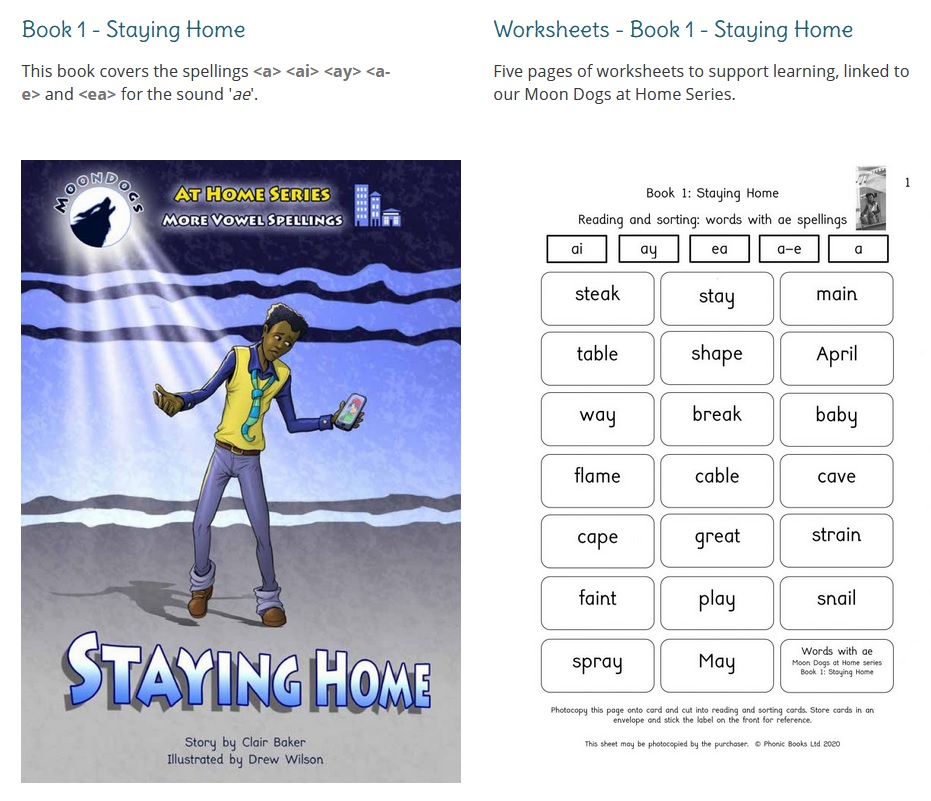
We use the physical Phonic Books resources a lot, and have found their free online resources very useful during our lockdowns. So generous, and so relevant. A lot of the WordWalls we’ve created also match their books’ teaching sequences.
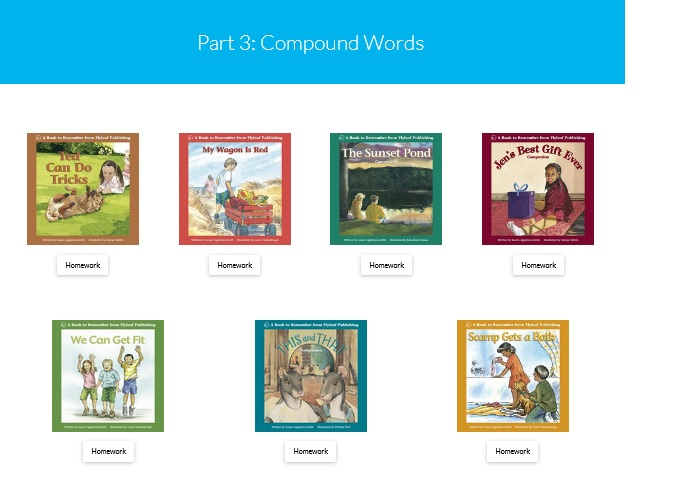
Flyleaf’s Online Portal contains lots of cute books from the UK which are perfect for online use, and all free at present, because of the pandemic. Again, so generous! Jen’s Best Gift Ever is my favourite, click here to read it, and here’s a comprehension quiz I’ve made as a follow-up activity (use it as a Gameshow Quiz for more pizazz).
4. ICT Games
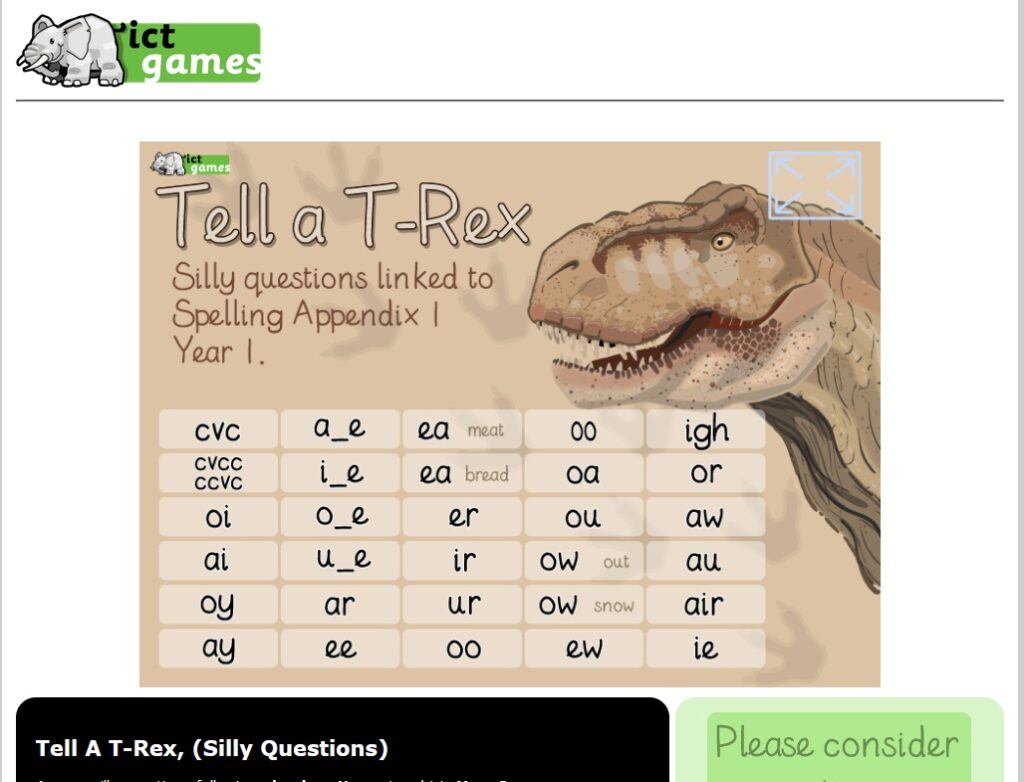
ICT games are all free online, and a quick, fun way to warm up or finish off a session. I often ask kids to type their own lists into Help A Hedgehog, then see how many they can read before the 90 second timer runs out. Other favourites are Tell A T-Rex, Poop Deck Pirates, Viking Full Circle, Forest Phonics, and Phonics Finder. This site runs on a donation model because the husband-and-wife team behind it think no child should be prevented from learning by lack of money. So if you can afford to donate, please do.
5. Sounds Write interactive whiteboard activities

If you’re using the program Sounds-Write, this USB contains heaps of activities ready for use online. They cover the Initial Code (one-letter=one-sound spellings plus major consonant digraphs) plus vowel spellings up to Sounds-Write Unit 28. The USB costs AUD$95, and I’ve definitely gotten my money’s worth.
Because many other Sounds-Write activities are provided as pdfs as part of the training, they have also lent themselves to online use (see item 8 below), and the Aussie/NZ Sounds-Write community has lots of great ideas and resources.
6. Little Learners Love Literacy apps and other resources
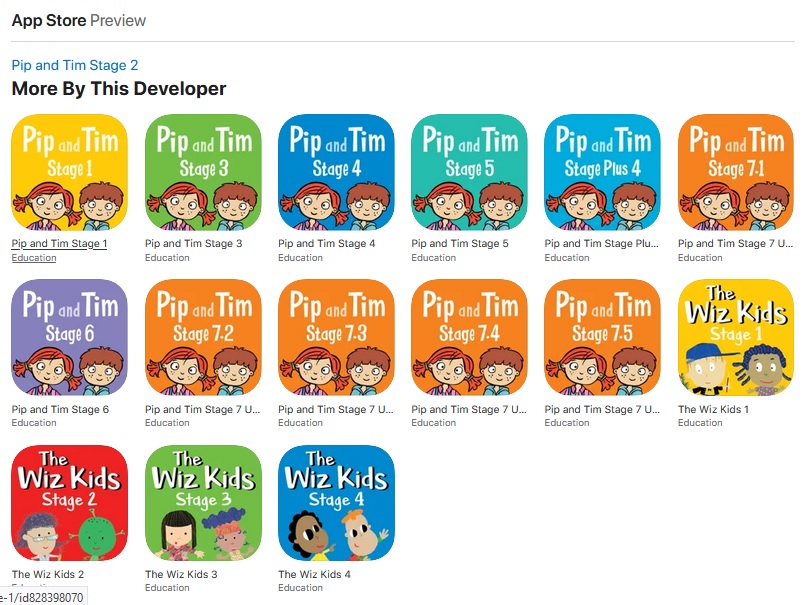
The app versions of the lovely LLLL books have been a great way to show young clients the books, by sharing the iPad screen online. Always affordable, the iPad versions are currently free till the end of September (at least in the Australian store). Which is so incredibly generous, and will help so many young, locked-down children learn to read. Lots of paper-based LLLL activities also lend themselves to online use, see item 8 below.
7. Powerpoint versions of decodable texts
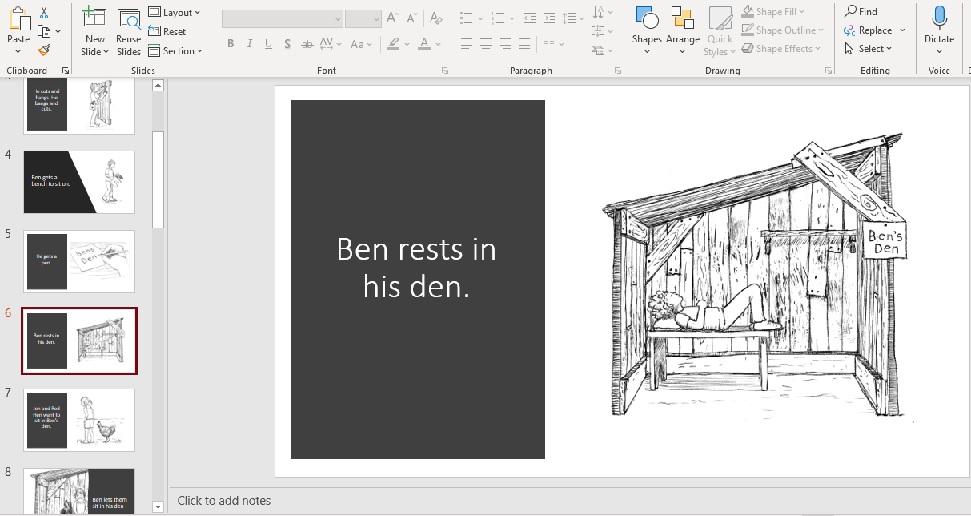
Some kids with good keyboarding skills like typing a simple story to dictation, to create a book they can then show a parent or teacher. I’ve used some Phonics With Feeling books for this, with author permission. I take screenshots of the pictures and paste them onto slides, type the text, then use Powerpoint’s formatting suggestions to make it look more schmick. Then I save it, delete the text and save it again under a different file name. Voila! A simple onscreen reading then spelling activity with large text.
8. Adobe Acrobat Reader editing tools
We use Zoom and it has been excellent, but I rarely use their whiteboard or editing tools. The free Adobe Acrobat editing tools work much better with pdfs. You can scroll through homework and cover it in ticks. You or the learner can type, change the font size and colour, and move text around. You can underline or put boxes around target words in sound searches (we play a guess-how-many-jellybeans-in-the-jar game with these, first guessing how many words with the target sound there will be). I just wish I could turn off the predictive text! (any ideas? I’ve tried everything!)

You can also play games (like the one above from Nicole Brady) using big dots as counters. Sounds-Write, Phonic Books and Little Learners Love Literacy books all have paper-based games that can be scanned as pdfs and used this way, and there are digital versions of the LLLL books. I use the iPad or iPhone app Make Dice held up to the camera for dice games, as I’m rubbish at online dice (all tips gratefully received). Make Dice can also replace the spinner for the Phonic Books Spin, Read and Spell games.
9. Kahoot!

I’m sad to say that I’ve only recently figured out that Kahoot! can motivate many kids to do quite a lot of reading. The best music teacher in the world (hi Roz!) told me it had revolutionised her lessons. Kids are often familiar with it from school, and think it’s fun and cool. We’re writing some downloadable quizzes now which should be easy to turn into Kahoot!s.
10. Jamboard
Google’s Jamboard is another useful tool I wish I’d discovered earlier. It’s like an online whiteboard with colourful post-it notes, from which I’ve made simplified versions of my moveable alphabet for word-building sequences, e.g. here the learner would be asked to change “stitch” into “switch”:
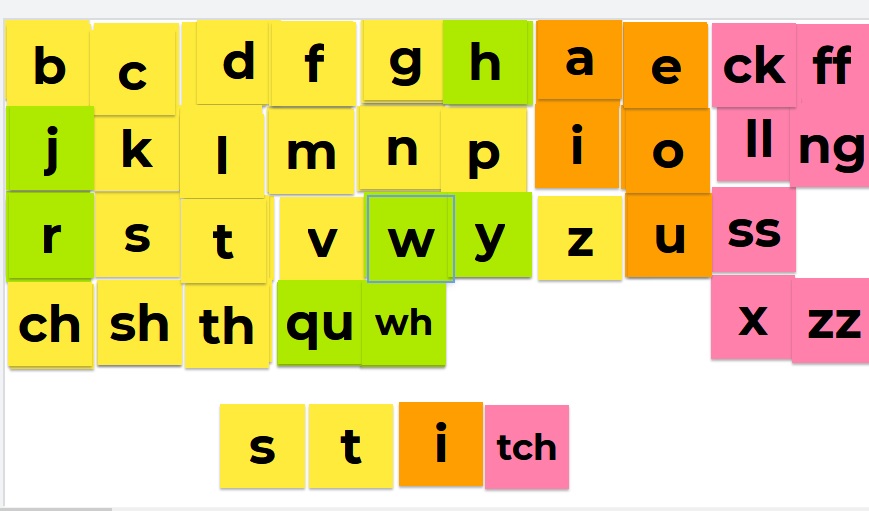
Kids tend not to stretch or rotate the tiles the way they have in other formats I’ve tried using for this activity. Jamboard is also a quick way to create neat word sorting activities:
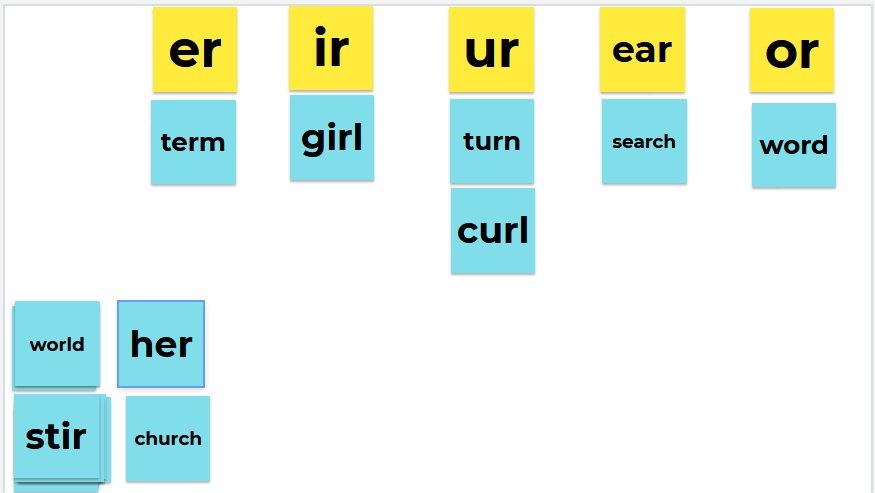
I get words for these sorts from my website’s sorted-by-sound lists (for same-sound-different-spellings activities) or sorted-by-spelling lists (for same-spelling-different sounds activities).
I hope you found some useful information in all that, especially if you’re still working online too. Pretty please leave any great ideas you have to share in the comments.
January 2021 holiday groups
0 Replies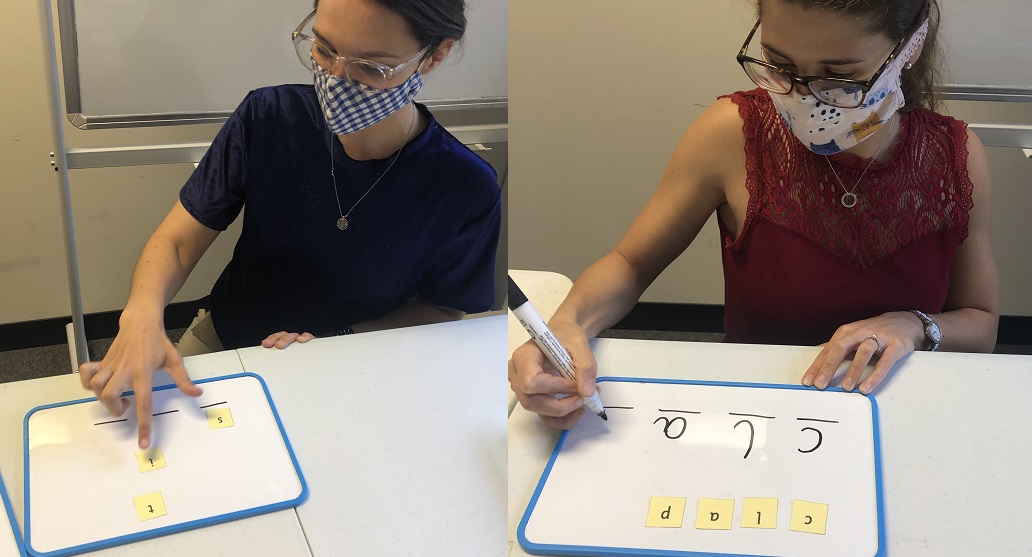 In the week of January 11-15 2021 we will be running some phonemic awareness and phonics/spelling small groups at the Spelfabet office in North Fitzroy. The groups are for struggling readers/spellers who will be going into Grade 1 or 2 next year.
In the week of January 11-15 2021 we will be running some phonemic awareness and phonics/spelling small groups at the Spelfabet office in North Fitzroy. The groups are for struggling readers/spellers who will be going into Grade 1 or 2 next year.
The groups will be staffed by Speech Pathologists Tessa Weadman, Adrianna Galioto (pictured above, though you can’t really see how smiley and nice they are under their masks) and myself, Alison Clarke.
We’re all trained in the program Sounds-Write and will use it in the groups, as well as playing some phonemic awareness/phonics games. We’ll provide home readers and about 30 minutes of homework each day, leaving plenty of time for swimming and other holiday fun.
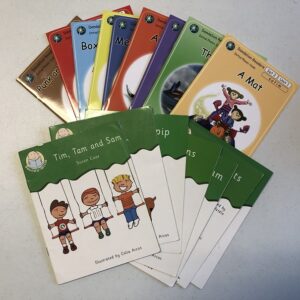
Each group will run for an hour, with a maximum of three children per Speech Pathologist, which means each child will receive five hours of intensive intervention. The cost will be $450 per child for the week of sessions. Many private health insurance companies provide rebates for group therapy.
The sessions will run as follows:
- 9:00am-10:00am targeting children who have done a year of schooling, but are still struggling to blend and segment and thus can’t reliably read or spell words with two or three sounds and simple spellings like “at”, “fun” and “hop”.
- 11.00-12.00pm targeting children going into Grade 1 or 2 who can blend and segment a little, and reliably read and spell two and three-sound words like “at”, “fun” and “hop”, but struggle with words with four or five sounds like “jump”, “stop” and “frog”.
- 1: 00- 2: 00pm targeting children going into Grade 1 or 2 who can can read and spell words containing four or five sounds, but struggle with words containing consonant digraphs like “sh”, “ch”, “th”, “ck” and “ng”.
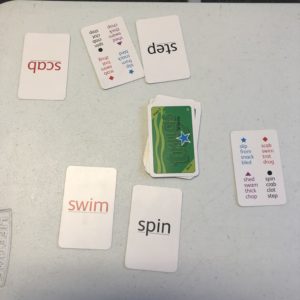
Children who are not already on our caseload will need to come in for an initial assessment ($190) first, so that we can be sure they are a good fit for one of the groups.
We hope our state’s COVID-19 double doughnut days (no new cases, no deaths) continue through January, and that our groups will be a fun way to boost struggling learners’ skills before they go back to school. We will always comply with Speech Pathology Australia COVID-19 safe guidelines.
Please contact our excellent office coordinator, Renee Vlahos on 03 8528 0138 or renee.vlahos@spelfabet.com.au if you’d like more information, or to express interest in enrolling a child in one of the groups. Renee goes on leave on 18/12/20, so if you’d like to check whether group places are still available after that please email info@spelfabet.com.au.
Phonics stocking stuffer
8 Replies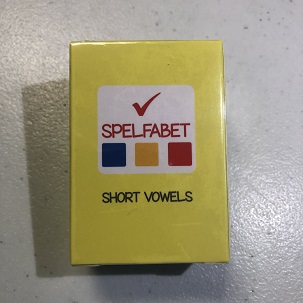
It’s the first day of summer here in Melbourne, after a long, hard year of lockdown. We’ve been mostly working online since March, which was quite a learning curve, so I’ve had almost no energy for blogging or the website (sorry). We’ve now had no new COVID-19 cases for a month (hooray! it can be done!) so are cautiously looking forward to the silly season.
If you’d like a simple, inexpensive phonics game as an end-of-year school activity or Christmas stocking stuffer, you might like my new printed (no laminating or cutting up required!) word-building card game. Lots of kids didn’t learn very well this year thanks to COVID-19, but we’re all pretty weary, so it seems like a good time to build skills and knowledge through games.
Here’s a 90-second video about the game:
Children who only know one sound for each letter of the alphabet will need adult help with the sounds for the consonant digraphs and trigraphs in this game (sh, ch, th, wh, ll, ss, ck, ng, tch, dge), but children who know these spellings can play more independently.
If a child builds a word they don’t know, you might like to tell them what it means and put it in a sentence or two, to build their vocabulary, or just skip over it if it’s not a common word.
Older/more advanced learners can put up to three adjacent consonants in their first words (e.g. bench, truck, splint and strengths), which are then much harder for their opponent to change. Knowing the consonant combinations used in English syllables helps with spelling and reading.
The game – 52 child-sized cards and 2 instruction cards in a box – costs $12 including GST from our online shop, plus $9.20 for packing and postage to anywhere in Australia, or you can click-and-collect from our office in North Fitzroy. Please ring first (03 8528 0138) to make sure our reception will be staffed when you visit, and it won’t be waiting room Peak Minute.
Sorry we can’t currently ship this game overseas. The DSF online shop also sells this game, and may take overseas orders. You can also get this game from the lovely people at Childplay toy shop in Clifton Hill, where I never fail to find the best gifts for kids.
The download-and-print version of this game is also still available, either by itself or in a set of three games, but you have to provide the cardboard and colour printer, laminate it and cut it up, and the end result isn’t as robust or professional-looking.
An earlier version of this game contained spellings like ‘v’, ‘j’, ‘ff’ and ‘zz’ which aren’t in many words, so that version was a bit harder to play. These spellings have been replaced by more common ones in the new game, so it’s easier and more fun for beginners and strugglers. I’m hoping to be able to produce more printed resources in future, if these cards are a success.


